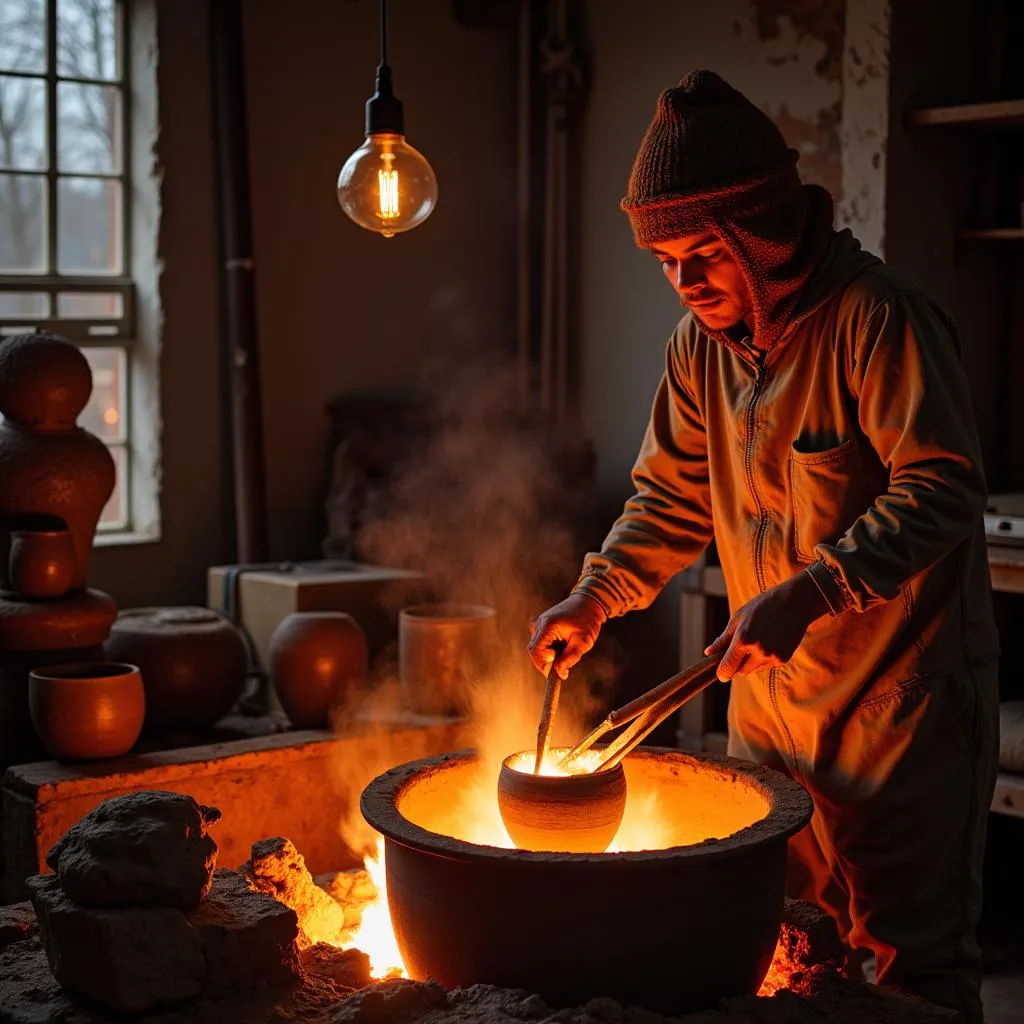Raku Horse Hair pottery, with its characteristic crackled glaze and delicate hair-like patterns, has captivated art enthusiasts for centuries. But have you ever wondered about the unique ingredient that lends its name to this art form – raku horse hair?
 Close-up of raku horse hair pottery, showcasing the intricate patterns and textures.
Close-up of raku horse hair pottery, showcasing the intricate patterns and textures.
A Fusion of Fire and Fur: The Art of Raku
Raku firing is a low-temperature pottery technique originating from 16th-century Japan. Unlike conventional methods, raku involves removing pieces from the kiln while still glowing red hot and placing them in a reduction chamber filled with combustible materials. This rapid cooling and oxygen deprivation create the signature crackled glaze and unpredictable, often dramatic, surface effects.
 A potter removes a glowing pot from a raku kiln.
A potter removes a glowing pot from a raku kiln.
The Role of Horse Hair: From Mane to Masterpiece
The magic of raku horse hair pottery lies in the introduction of horse hair to the hot ceramic surface. As the hair makes contact, it instantly vaporizes, leaving behind a carbon trail that embeds itself in the glaze. This interaction creates the distinctive web-like patterns that resemble fine brushstrokes or delicate strands of hair.
Choosing the Right Hair: Not All Horses Are Created Equal
While the term “raku horse hair” is widely used, not all horse hair is suitable for this technique. The ideal hair comes from the mane or tail and should be long, thick, and free from any oils or conditioners. These qualities ensure a clean burn and create bolder, more defined patterns on the pottery.
“The choice of horse hair is as crucial as the skill of the potter,” says renowned ceramic artist [Expert Name], “The right hair can elevate a piece from ordinary to extraordinary.”
Beyond Aesthetics: The Symbolic Significance
Raku horse hair pottery is more than just visually stunning; it carries profound symbolism. The unpredictable nature of the firing process reflects the Japanese philosophy of “wabi-sabi,” which embraces imperfection and transience. Additionally, the use of horse hair – a symbol of strength and freedom – adds another layer of meaning to these unique pieces.
Conclusion: Embracing the Unpredictable Beauty
Raku horse hair pottery, with its captivating blend of fire, fur, and human artistry, continues to intrigue and inspire. Each piece, with its unique markings and unpredictable beauty, is a testament to the harmonious relationship between nature and human creativity.
FAQ
- Can I use any type of hair for raku firing? While other types of hair can be used, horse hair is preferred for its thickness and low oil content, resulting in more dramatic patterns.
- Is raku horse hair pottery food safe? Generally, no. Due to the low firing temperatures and potential for porous surfaces, it’s best to enjoy raku pieces for their decorative value.
- Where can I buy raku horse hair pottery? Look for handcrafted pieces at art fairs, craft markets, or online galleries specializing in ceramics.
Need Help?
For all your equestrian needs and expert advice, contact Justus Horses USA at 0772127271 or [email protected]. Visit our website for more informative articles on horse care and unique equestrian products.